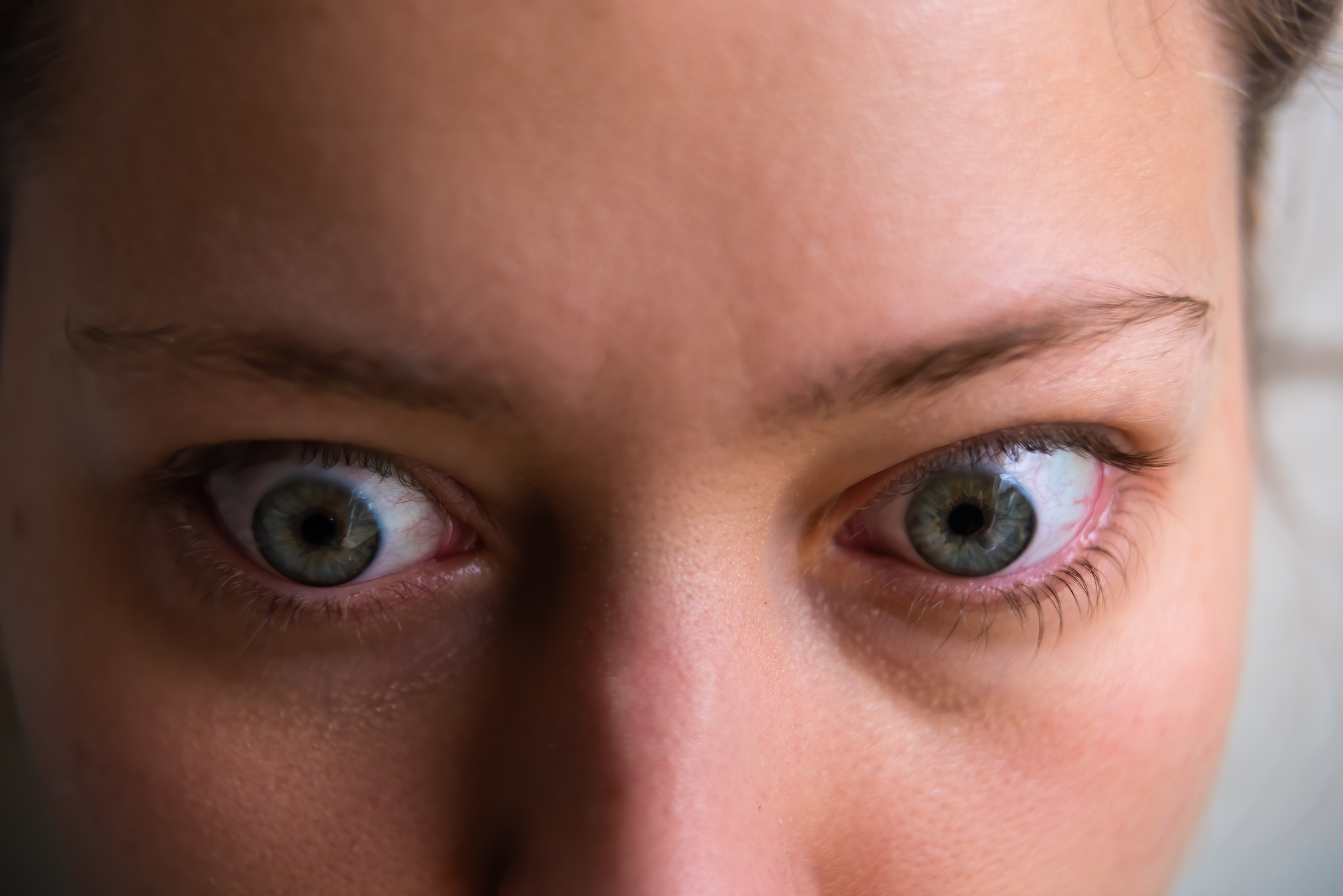Symptoms
- Eyes and eyelids become swollen and red.
- Swelling and stiffness of the muscles can lead to double vision.
- Staring’ or ‘bulging’ because the eyes are pushed forward
- Dry or watery eyes
- Pain in or behind the eye — especially when looking up, down, or sideways
- Rarely it can cause blindness from pressure on the nerve at the back of the eye or ulcers forming on the front of the eye.
Causes
Thyroid eye disease is also known as Graves eye disease. It happens when immune cells attack the thyroid gland and as a result, the thyroid gland secretes an excess amount of thyroid hormone. The eyes and eye muscles also start to expand because the immune cells attack those areas too.
Treatment
- Artificial tears and lubricating ointment: In patients with a mild case of Thyroid eye disease
- Double vision correction: Covering one eye immediately relieves double vision. It may be possible to optically realign eyes with the use of prisms either applied to glasses or ground into the lens, When double vision can’t be corrected with prisms, eye muscle surgery may be necessary.
- Surgery: If associated with severe corneal problems, lid surgery to help partially close the lids or to raise the lower lids may be necessary. In severe retraction of the upper or lower lid, surgery to reduce the effects of the lid retractors, either without or with spacer placement (such as a piece of tissue removed from the roof of the mouth) can help the lids to close.
-
Solving Optic Nerve related issues
- Medical: Treatment is aimed at shrinking the muscles, usually by the use of high dose steroids
- Surgical: This is usually done by removing one or more of the bony walls of the orbit. Since the optic nerve is usually compressed at the very back of the orbit, removing the posterior medial wall of the orbit is most critical. This may be done directly (through the soft tissues or skin around the eye), through the sinus under the eye, or through the nose. To further reduce the eye bulge the floor, lateral wall, or even the roof of the orbit may be removed.
FAQs
What is the chance that I will develop Thyroid eye disease?
Thyroid eye disease is mainly associated with an over-active thyroid due to Graves’ disease, although it does sometimes occur in people with an under-active or normally functioning thyroid.
Overall, about a quarter of people with Graves’ disease develop Thyroid eye disease either before, during, or after their thyroid disorder is diagnosed. In most cases the eye disease is mild. Smoking increases the chances of developing Thyroid eye disease eight times as compared to non-smokers.
How can patients monitor severity of the disease?
- Maintaining normal levels of thyroid hormones. Test your blood regularly and follow your doctor’s instructions, including taking prescribed medications.
- Regular follow ups with eye doctor and physician
Can Thyroid eye disease affect my quality of life?
Thyroid eye disease can impact your social and psychological well-being. You may experience mood swings, anxiety or irritability if you have fluctuating thyroid levels. These symptoms will likely persist until your hormone levels stabilize. Additionally, you may experience anger or a decline in self-confidence as a result of the change in the appearance of your eyes. These symptoms often improve with treatment or surgery.

